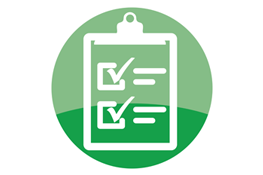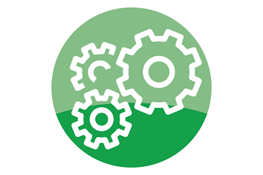Implementing a lean QMS is not about cutting corners. It is about corporate focus, which in our case means being risk-driven to create safe and effective devices as quickly and cost-effectively as possible.
When developing its QMS, Velentium made a strategic decision to focus on design controls, manufacturing, and all associated processes. We are very familiar with the requirements for submission to the FDA and EU and are continually able to produce the necessary regulatory materials to satisfy the needs of the process. Our clients generally prefer to maintain their brands and remain the “familiar friendly face” to physicians, patients, and other end users, as well as to the FDA, but we provide significant support for their submissions.
We see risk management not only as a process to follow but also as a crucial tool for maximizing value throughout the product lifecycle. Acknowledging the importance of risk management helps us focus our design and our processes around mitigating risk, which ensures that we identify negotiable and non-negotiable aspects of designs. After all, once a device’s therapy or diagnostic is designed, almost all of the remaining work revolves around protecting the patient. We believe that risk management should not be seen just as a way to mitigate risk within a design or process, but also as a means to illuminate the real value within the product you’re creating and describe the process you will need to achieve it. Risk management is not just a hoop to jump through; in addition to ensuring a safer device, it can and should be a real money and time saver. A valuable risk management process will drive simplification into design and operations, consequently accelerating development and reducing cost.
Quality systems exist to help the design and development process, but over time they often morph into bureaucratic systems of red tape and myopic complexity. Adverse change occurs when the focus is placed on the quality system rather than on the output it is intended to produce. Velentium’s stance is that a QMS should benefit the patient: its main reason for existence is to develop a safe and effective product (not job security or infrastructure growth). This meant that the entire QMS had to be stripped down to its fundamentals. We accomplished this by aligning with ISO 13485.
A bit of background: ISO 13485 is an international standard developed from ISO 9001 with special considerations for the medical device industry and its products. ISO 13485 identifies the essential requirements of a medical device quality system; therefore, we structured our QMS around it, directly overlaying and ordering its precepts into our operating procedure. We saw immediate value from this approach because all stakeholders had already validated ISO 13485.
(ISO 13485 dictates what a quality system must have, but it is not a law unless a government adopts or recognizes it for that purpose. The European Union has taken this step through its Medical Device Regulation (MDR) whereas, while acknowledging the standard, the US has its own Quality System Regulations (QSRs), which are federal laws which the FDA has authority to enforce. These QSRs align with ISO 13485 concepts, so compliance with ISO 13485 will yield accordance with nearly all related QSRs. For details and analysis, download our free whitepaper on Medical Device Standards).
With each QMS development conversation, we consciously and continuously fought the urge to include non-essential procedures that could hinder our goal of getting safe and effective therapies or diagnostics to a patient as fast as possible. Even this goal is about risk mitigation: if a QMS becomes unnecessarily time-consuming and burdensome, product development lifecycles will lengthen… which in turn increases the time and cost to patients for delivery of the new therapy or diagnostic. Such delays in time and price are contributors to the increase in healthcare costs, which fuels our passion for fighting QMS bloat.
A successful lean QMS requires a delicate balance of knowing where to allow people the freedom to innovate and improve without neglecting principles. It must:
- Enforce policies without requiring archaic or burdensome processes
- Permit processes and methods to evolve as users discover more efficient ways to carry out those principles.
In other words, an effective lean QMS will focus on and enhance processes, but be less concerned about creating filters to catch defects. By empowering process owners, an adequately executed QMS will create an environment which creates fewer errors. Applying energy to prevent mistakes will, in turn, reduces energy spent detecting and fixing defects. Wherever detecting filters are still needed and beneficial, seek ways to automate them; turn to manual filtering and detecting only as a last resort.
Our next post will explore this balance between empowering developers and controlling procedures. If you’d rather not wait, click here to download our QMS white paper.
If you would like to be notified when these posts go live, please subscribe for up-to-date email alerts.









